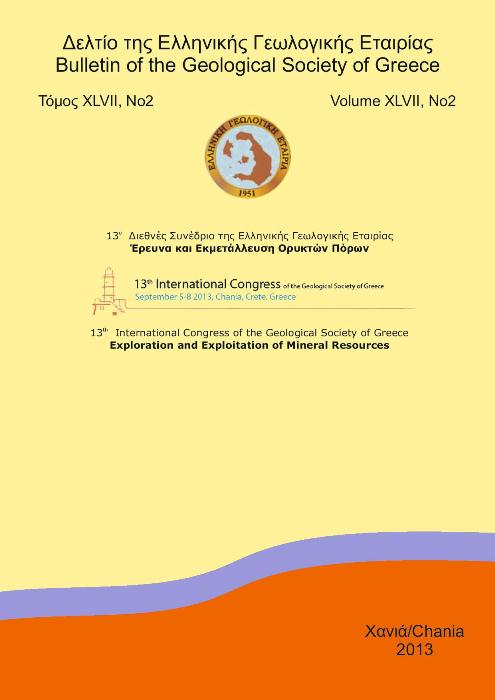SEISMIC SOURCES AND MAIN SEISMIC FAULTS IN THE AEGEAN AND SURROUNDING AREA
Περίληψη
A seismic source is defined, in the present work, as the part of the seismogenic layer of the
earth’s crust with a circular horizontal dimension (E, R), where E is the epicenter of the largest
earthquake (mainshock) ever occurred in this seismic source and radius equal to the half fault
length of this largest earthquake (R=L/2). In addition to foreshocks and aftershocks other
smaller mainshocks occur in other smaller faults of this source or in parts of the main fault.
All available historical and instrumental data concerning strong (M³6.0) shallow (h≤60 km) and
intermediate depth (60km<h≤100km) shocks which occurred in the Aegean area between 464
B.C. and 2008 are used in the present work in an attempt to identify the seismic sources in this
area, as well as to determine the basic parameters of the largest fault in each source. A particular
procedure is followed to identify 155 seismic sources in this area and determine the
basic parameters of the largest fault in each source. Declustering has been also performed to
define mainshocks in the Aegean area and the completeness of this mainshock catalogue has
been determined. Results are summarized in table (1).
Λεπτομέρειες άρθρου
- Πώς να δημιουργήσετε Αναφορές
-
Karakaisis, G., Papazachos, C., & Scordilis, E. (2010). SEISMIC SOURCES AND MAIN SEISMIC FAULTS IN THE AEGEAN AND SURROUNDING AREA. Δελτίο της Ελληνικής Γεωλογικής Εταιρείας, 43(4), 2026–2042. https://doi.org/10.12681/bgsg.11393
- Ενότητα
- Σεισμολογία

Αυτή η εργασία είναι αδειοδοτημένη υπό το CC Αναφορά Δημιουργού – Μη Εμπορική Χρήση 4.0.
Οι συγγραφείς θα πρέπει να είναι σύμφωνοι με τα παρακάτω: Οι συγγραφείς των άρθρων που δημοσιεύονται στο περιοδικό διατηρούν τα δικαιώματα πνευματικής ιδιοκτησίας επί των άρθρων τους, δίνοντας στο περιοδικό το δικαίωμα της πρώτης δημοσίευσης. Άρθρα που δημοσιεύονται στο περιοδικό διατίθενται με άδεια Creative Commons 4.0 Non Commercial και σύμφωνα με την οποία μπορούν να χρησιμοποιούνται ελεύθερα, με αναφορά στο/στη συγγραφέα και στην πρώτη δημοσίευση για μη κερδοσκοπικούς σκοπούς. Οι συγγραφείς μπορούν να: Μοιραστούν — αντιγράψουν και αναδιανέμουν το υλικό με κάθε μέσο και τρόπο, Προσαρμόσουν — αναμείξουν, τροποποιήσουν και δημιουργήσουν πάνω στο υλικό.






